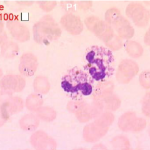Mental health articles
OF mental health care and mentally ill
PATTERNS OF ATTACHMENT
The attachment patterns identified at 12 to 18 months of age in the Strange Situation Procedure are: B: Secure—the infant knows how to signal her needs and the parent is able and happy to meet her in a relatively consistent way. The secure pattern is characterised by a balance between attachment and exploration, and by openness in emotional expression. A: Insecure/Avoidant—the parent rewards independence and exploration and is relatively intolerant of the infant’s dependency needs, and the apparently independent infant learns to focus more on ‘doing’ than on ‘being with’ and minimises expression of emotional cues. This pattern is characterised by a dominance of exploration over attachment and by hiding feelings. C: Insecure/Ambivalent—the parent is inconsistent, and a fussy, dissatisfied infant maximises expression of emotional cues. This pattern is characterised by a dominance of attachment behaviours over exploration and by heightening or exaggerating emotional expression. D: Disorganised—The frightened or frightening parent who is the source of distress as well as comfort for the infant results in contradictory infant behaviours. This pattern is characterised by mixed and disorganised attachment behaviours, including showing signs of fear of the parent, withdrawal, or a mixture of avoidant and ambivalent behaviours. In community samples (there is some minor cultural variation), infant attachment classifications show the following approximate distribution: • Secure—55–65 per cent • Insecure/Avoidant—20–30 per cent • Insecure/Ambivalent—5–15 per cent • Disorganised—10–18 per cent. The avoidant and ambivalent patterns are part of the normal population distribution and represent the infant’s adaptation and response to the parent’s caregiving style. They are not pathological patterns. Nevertheless, longitudinal studies show that attachment security conveys a selective advantage in the development of: • social intelligence • regulation of emotions and regulation of stress • self-reflective functioning. It is important to note that there was not an intention to ‘pathologise’ any of these attachment categories. However, further research suggests that infants showing ‘disorganised’ behaviour on the SSP are over-represented in high-risk populations, including infants exposed to neglect and abuse. They are also at high risk of later psychopathology (Lyons-Ruth & Jacobovitz, 1999).
From Mental health articles, post PATTERNS OF ATTACHMENT
Post Footer automatically generated by wp-posturl plugin for wordpress.







Leave a Reply